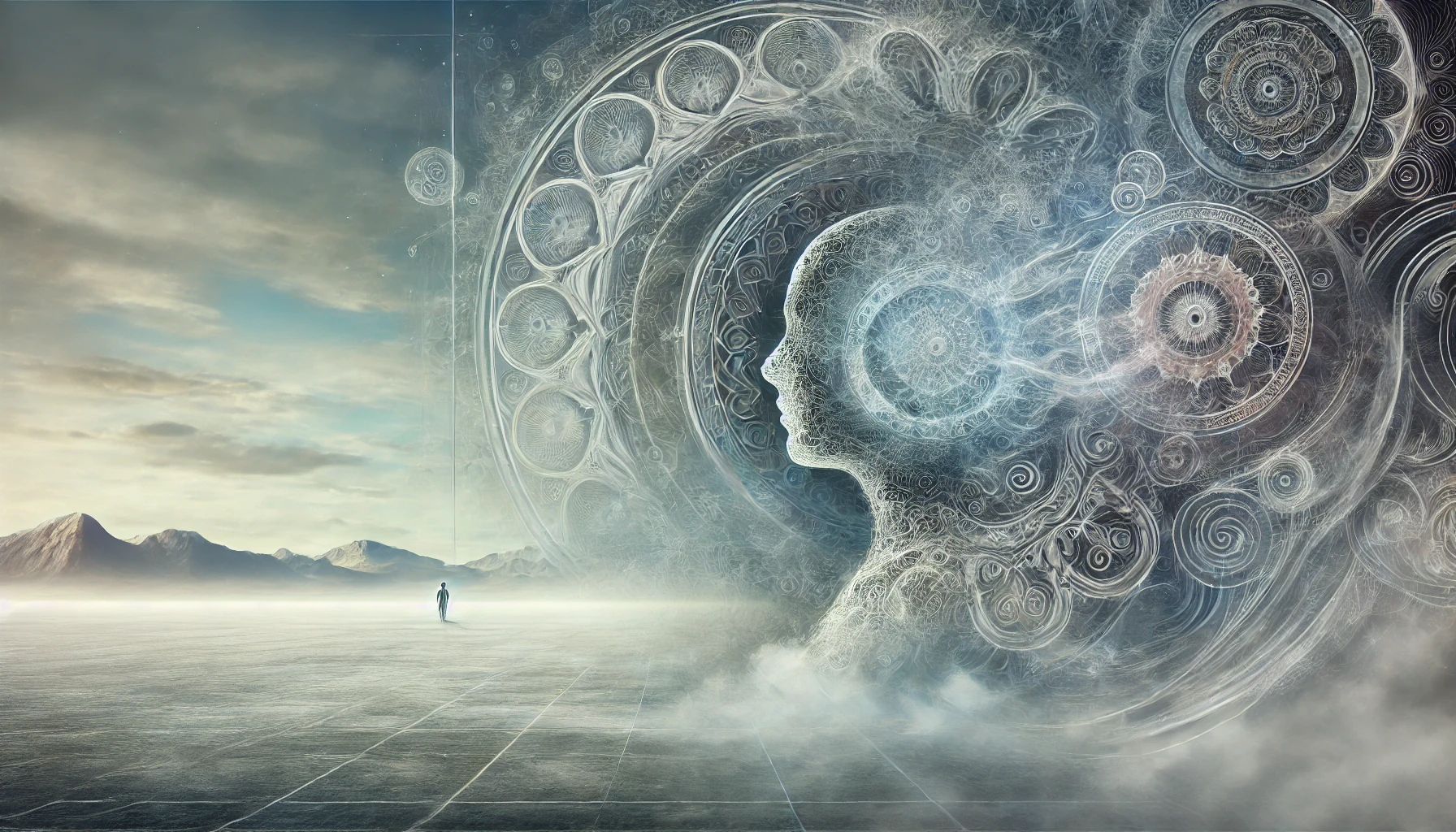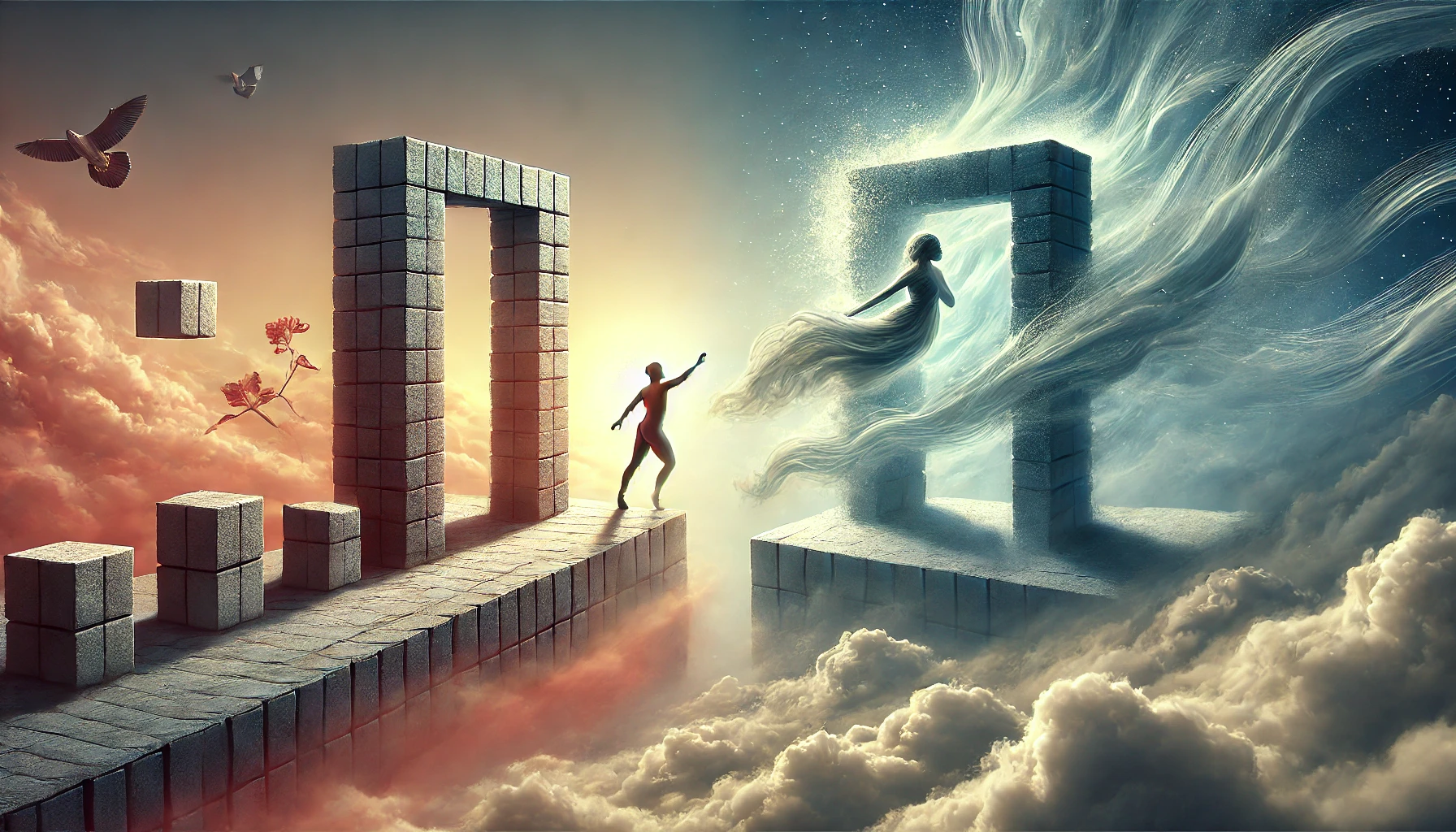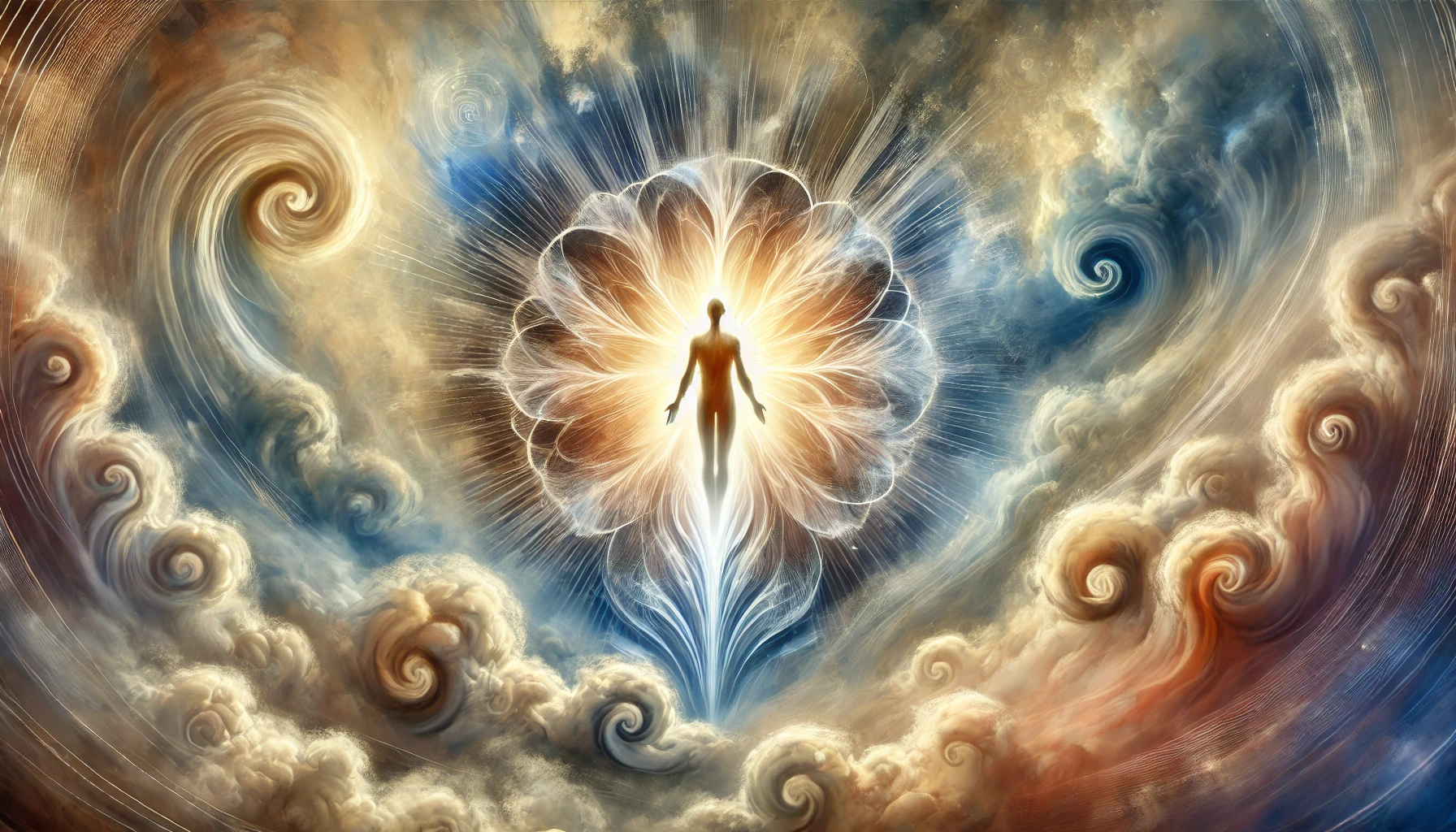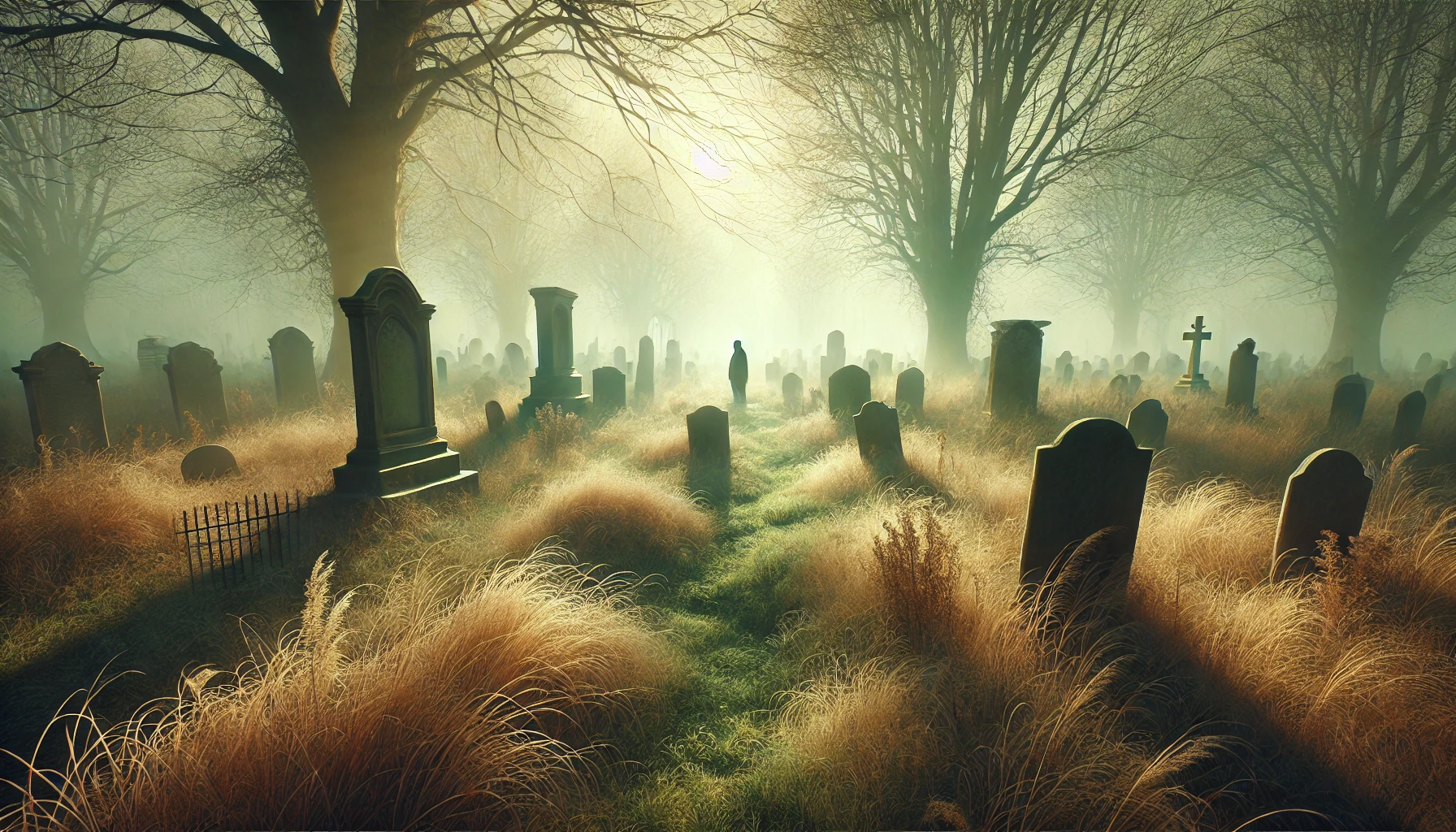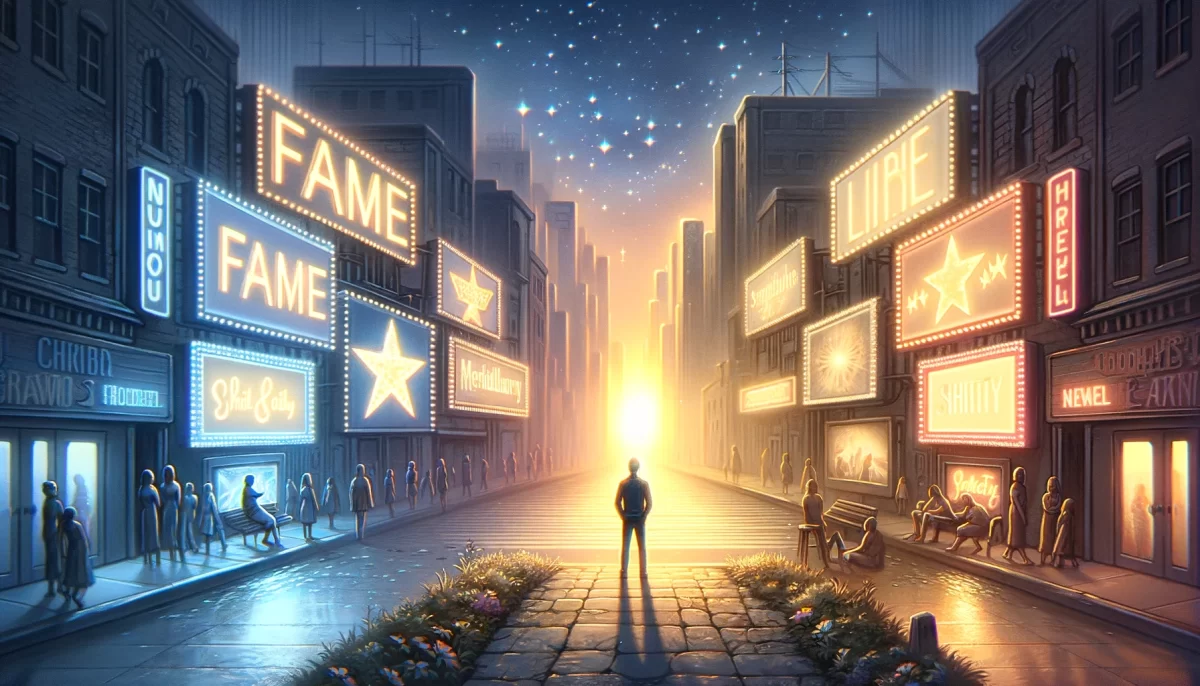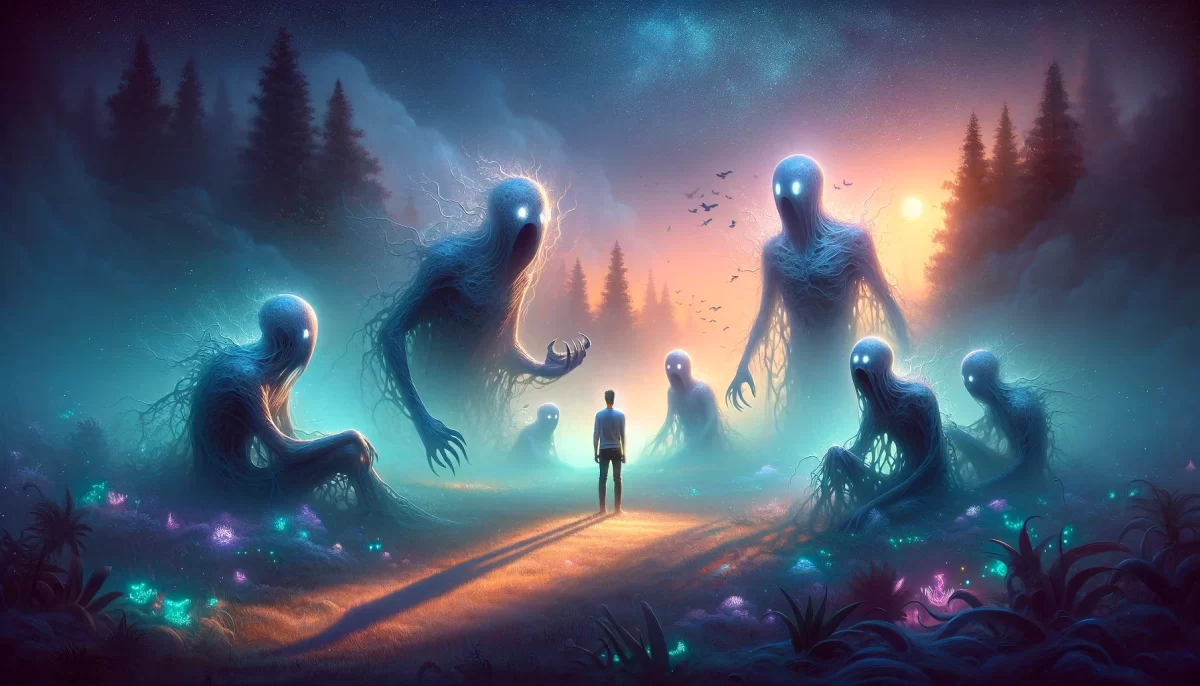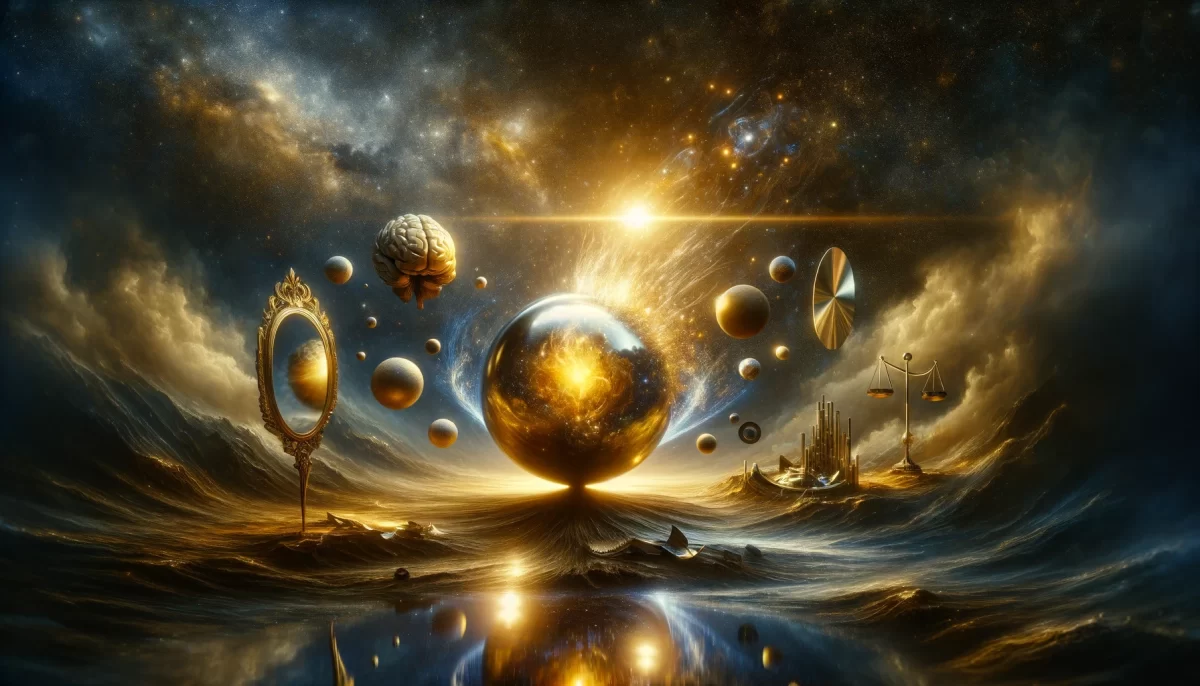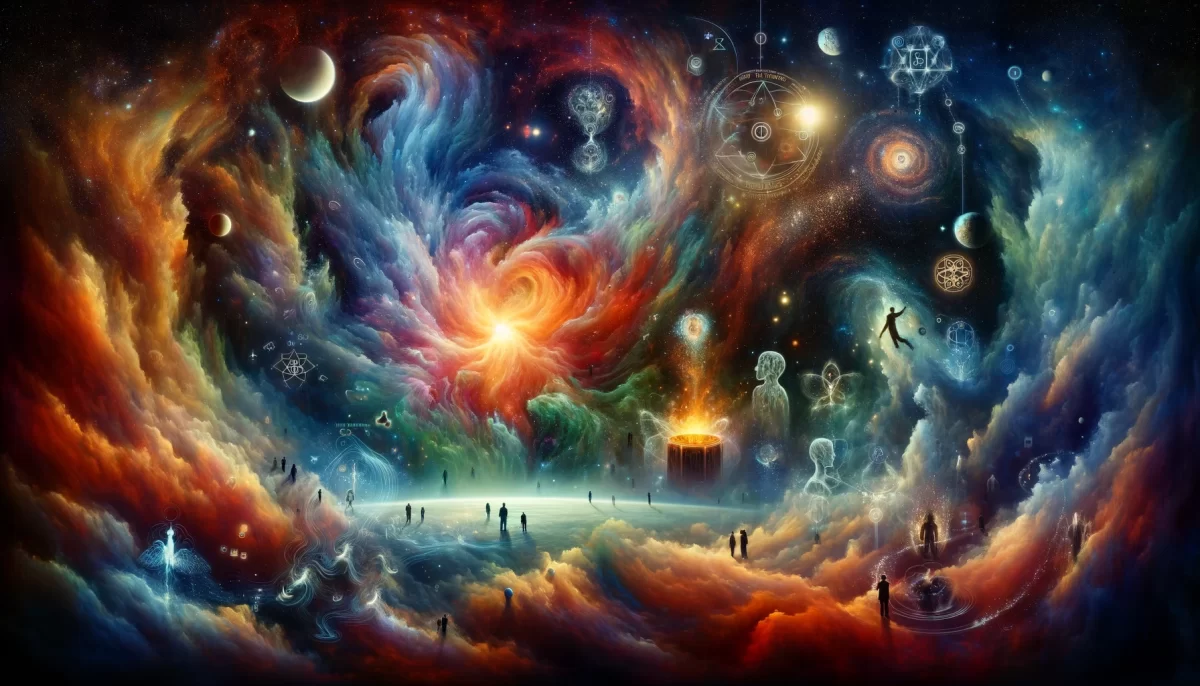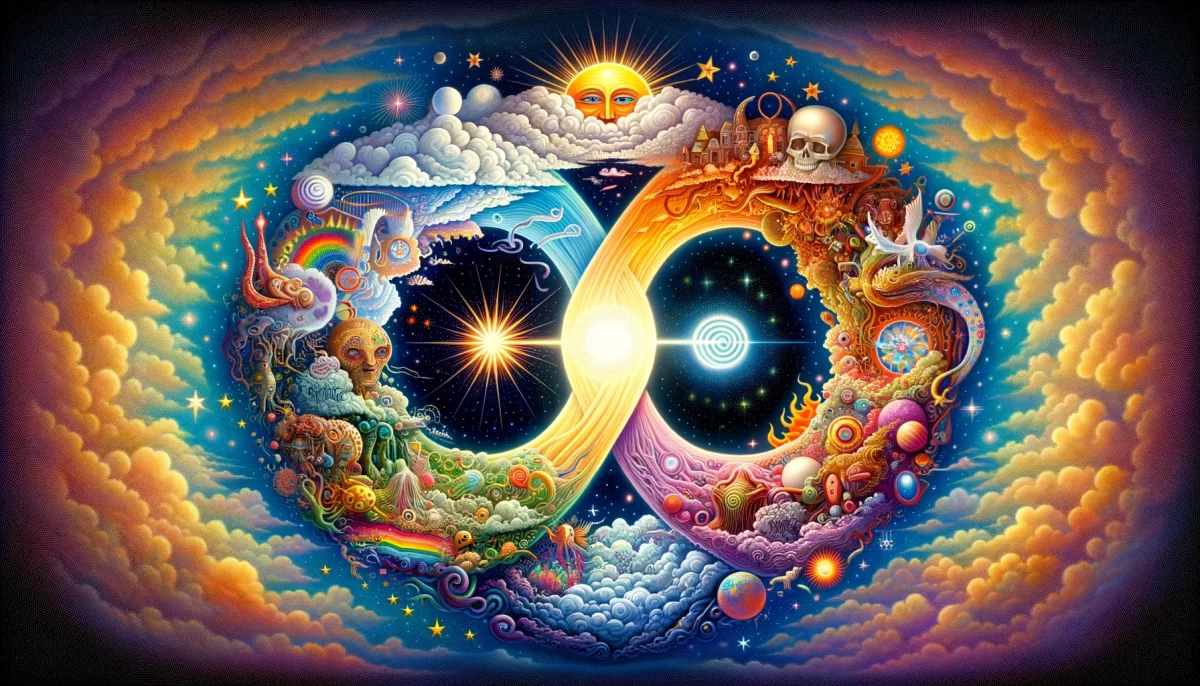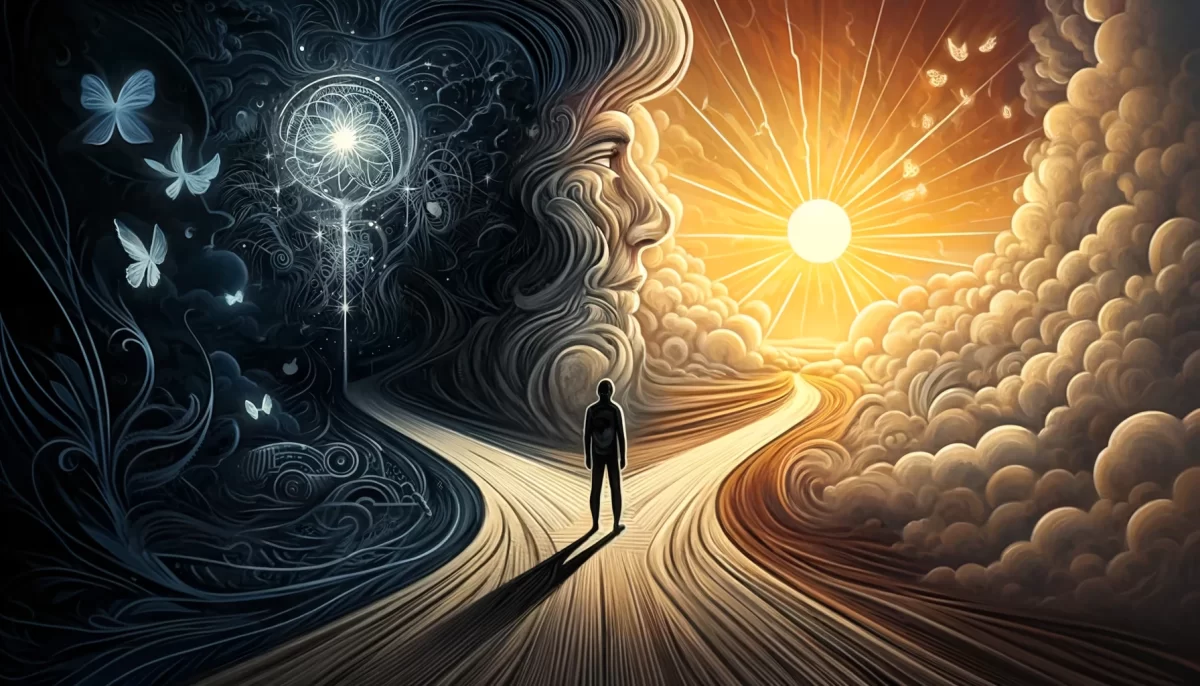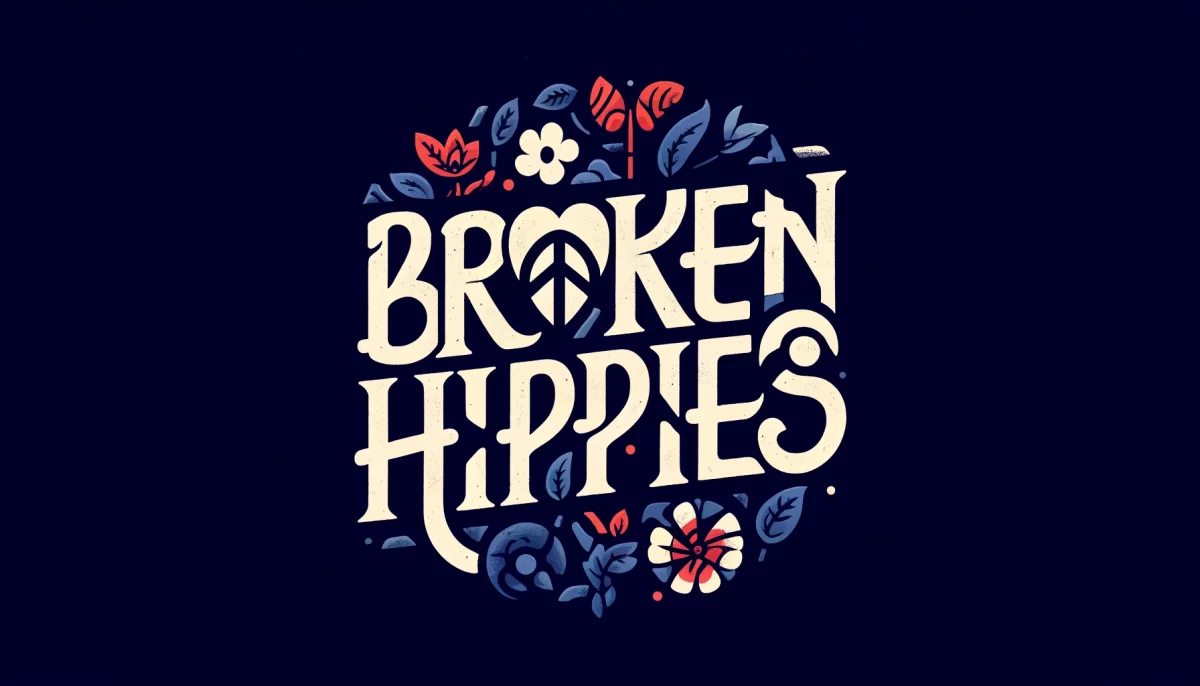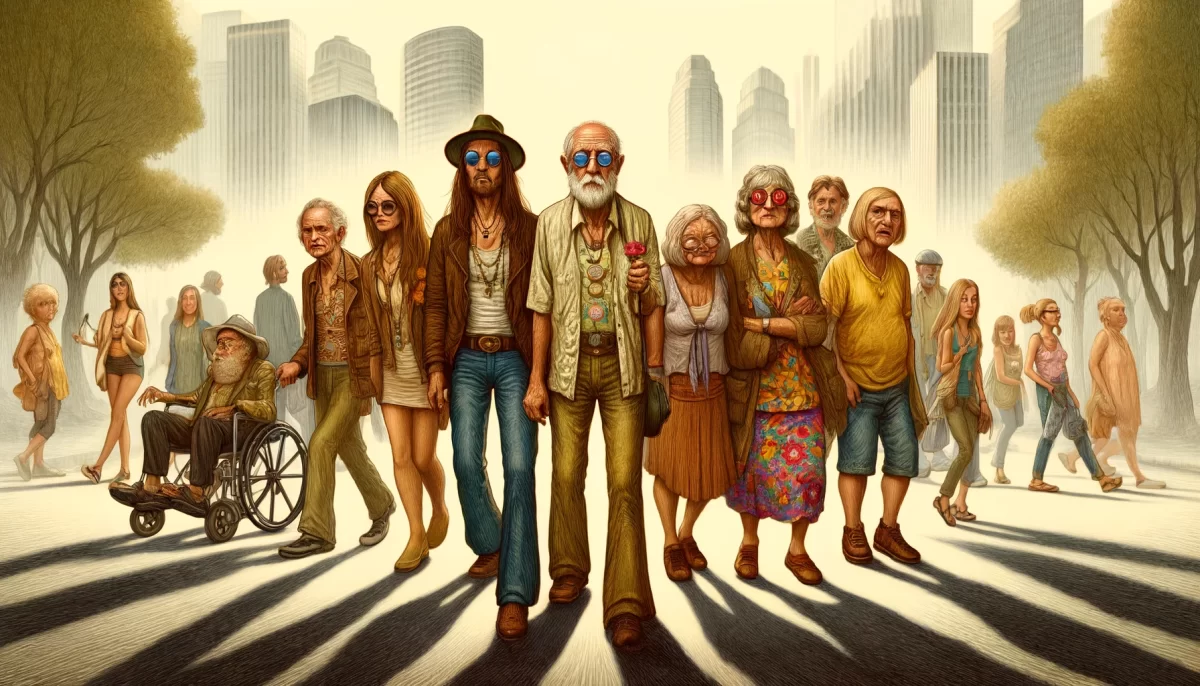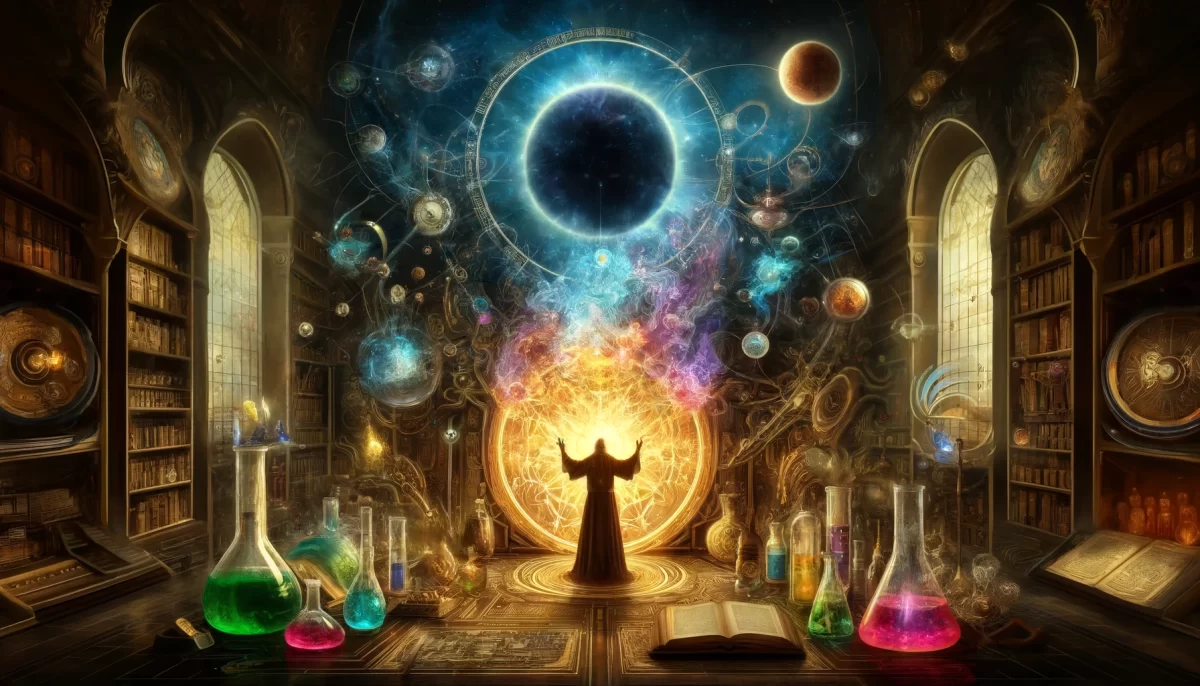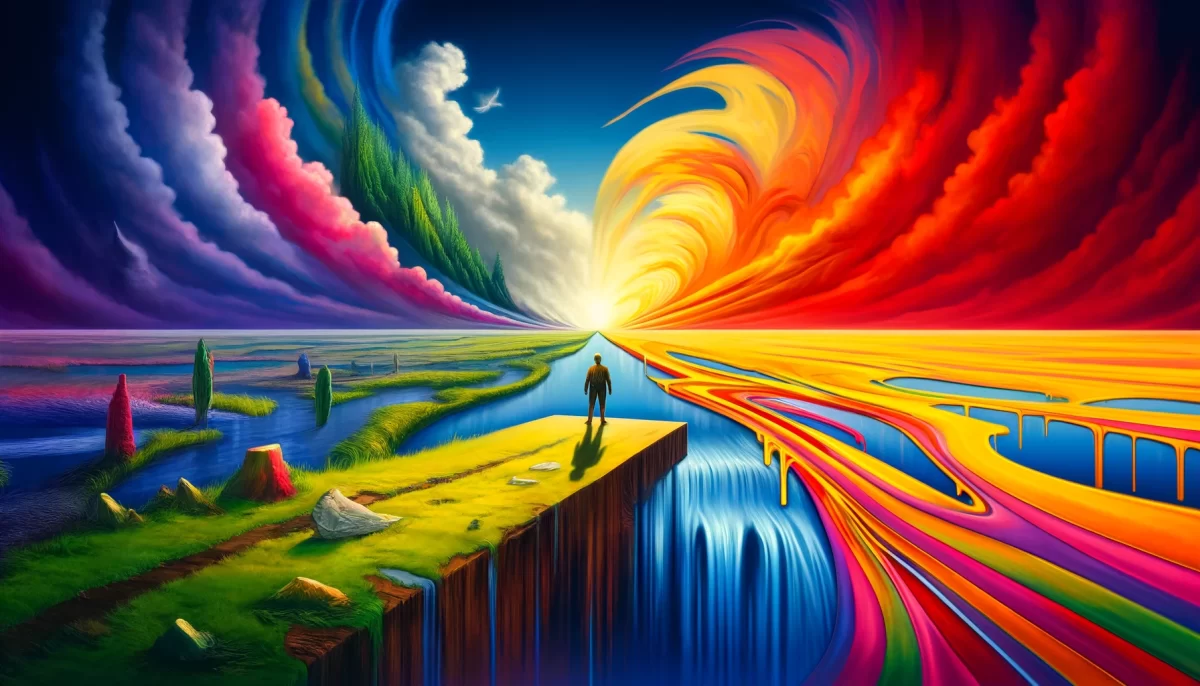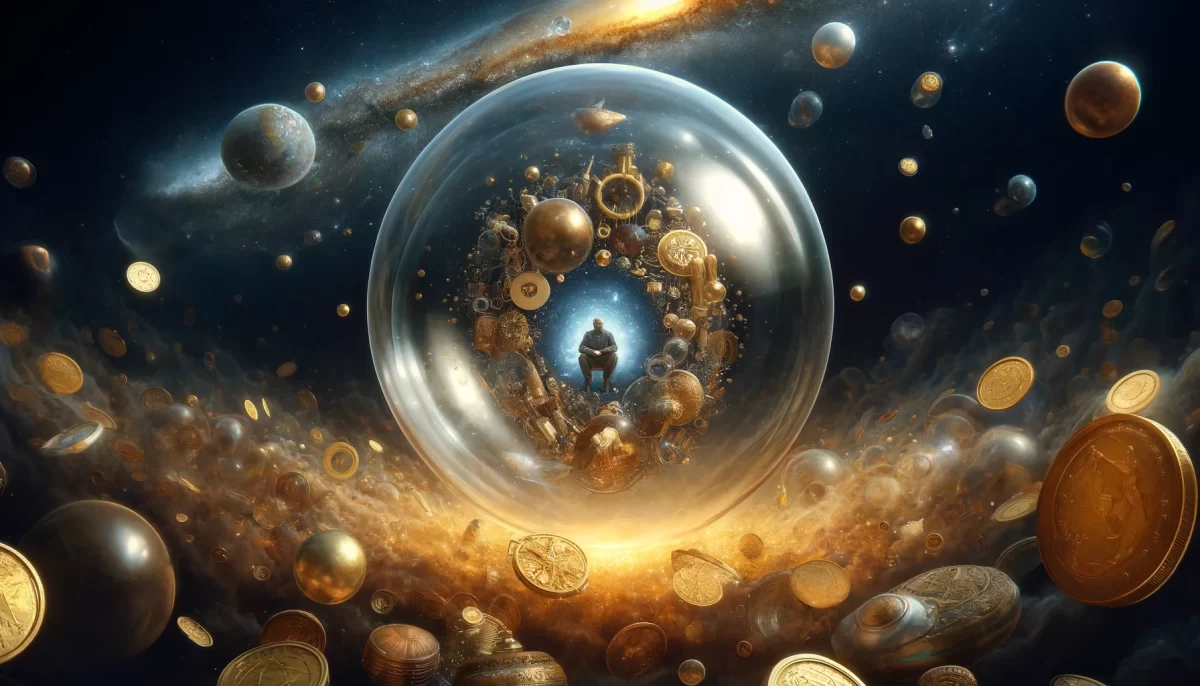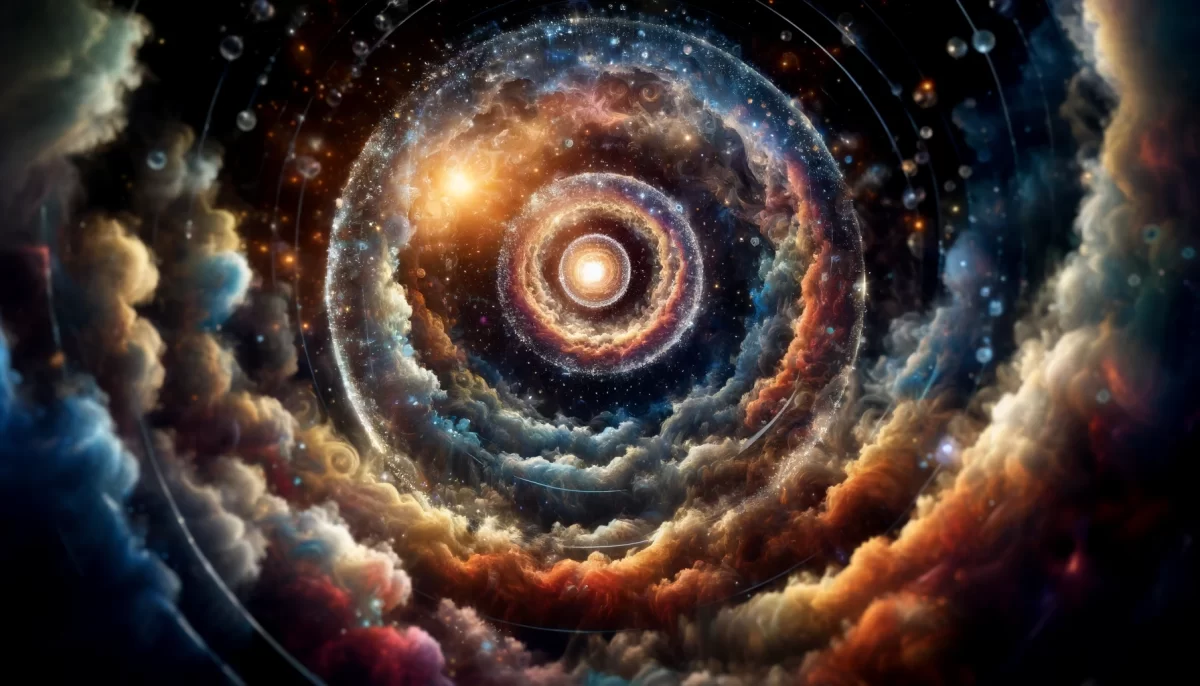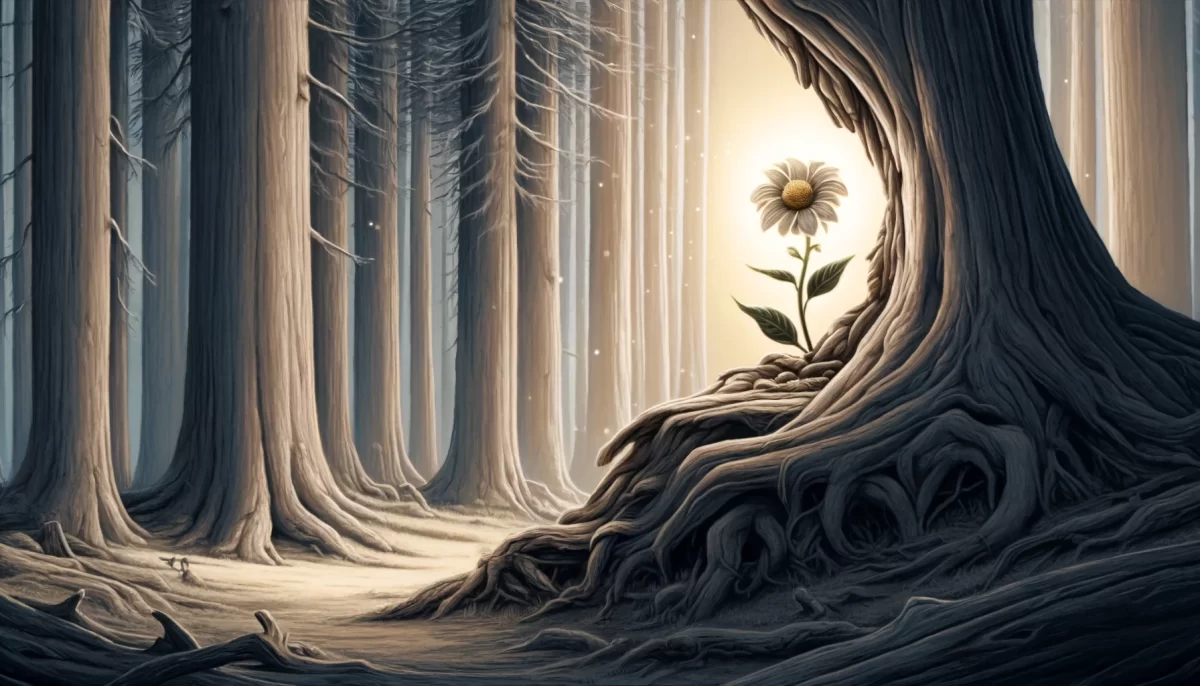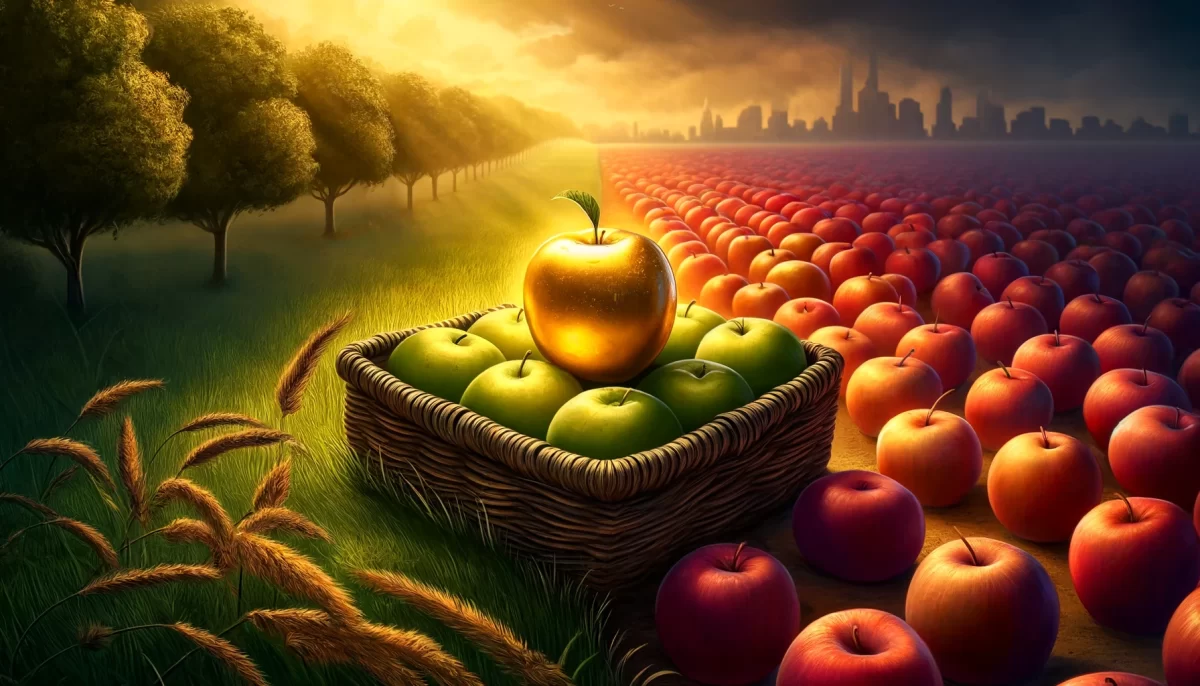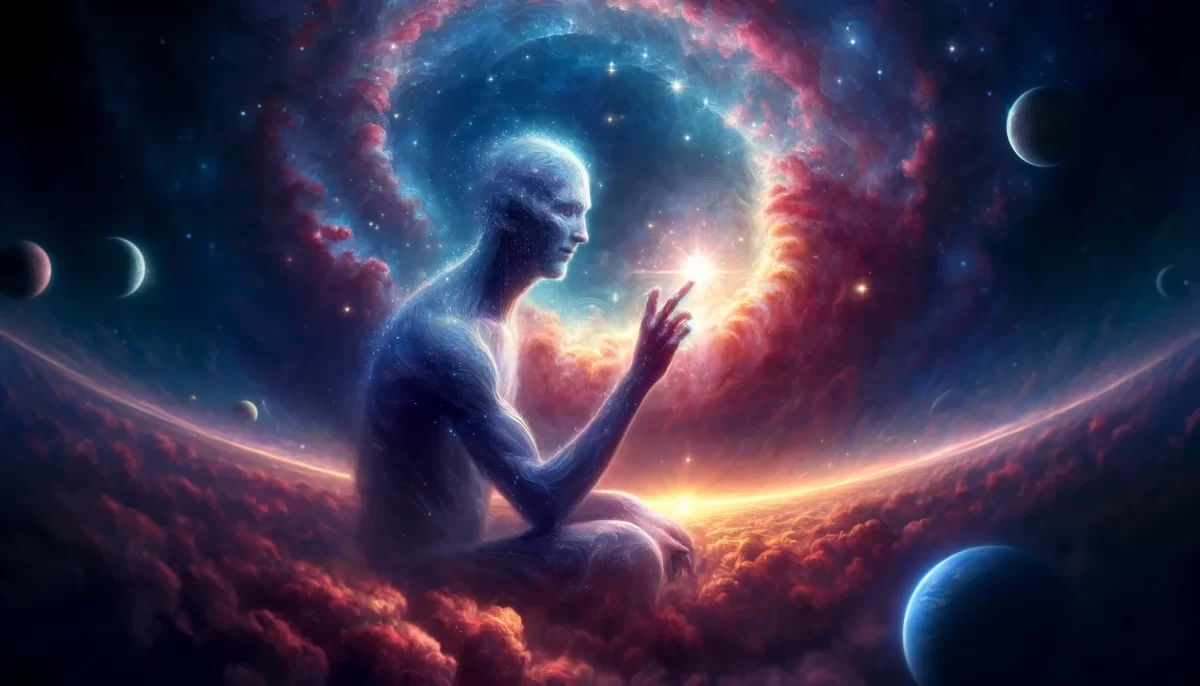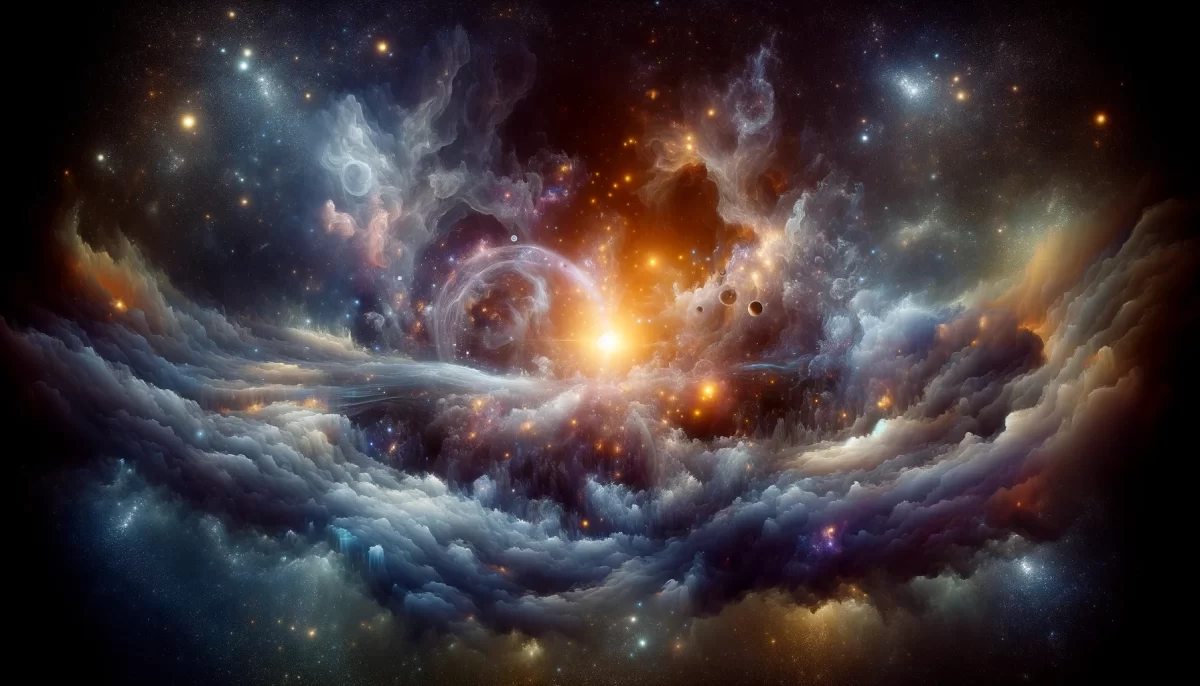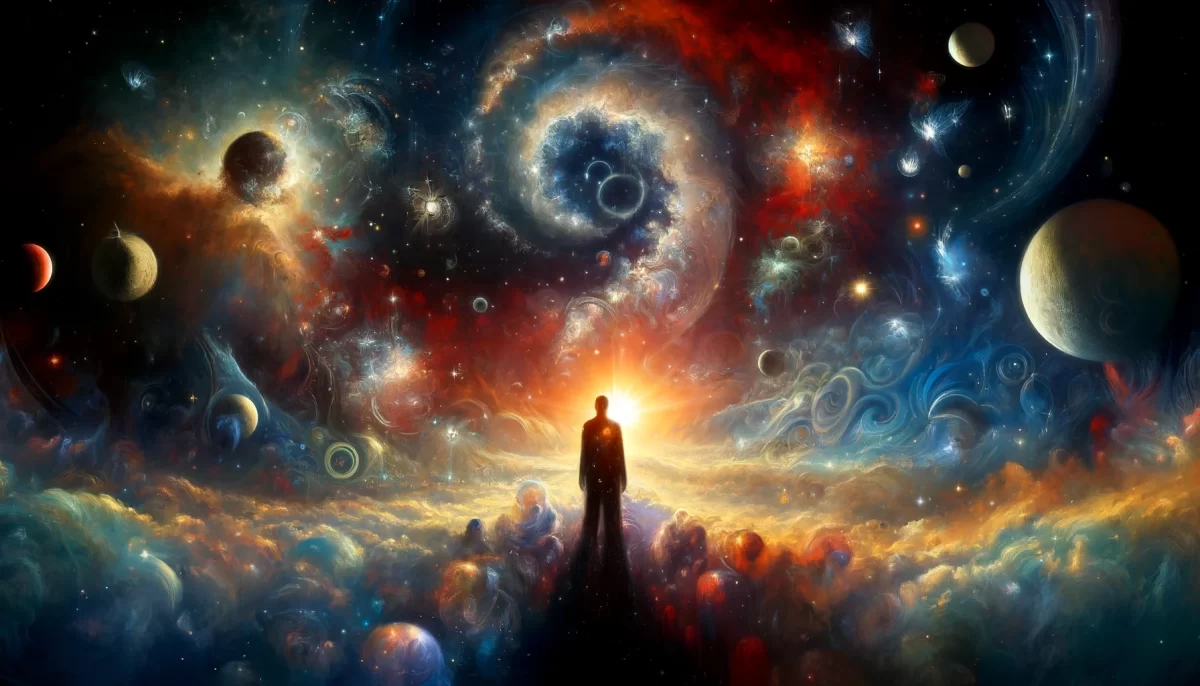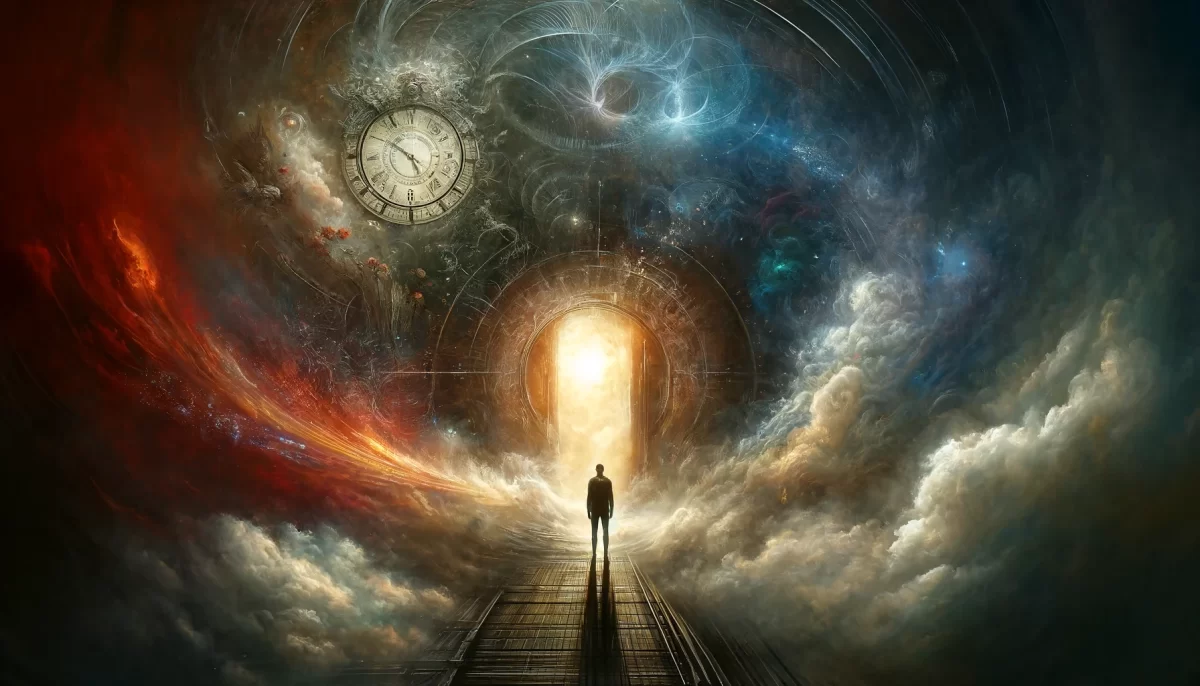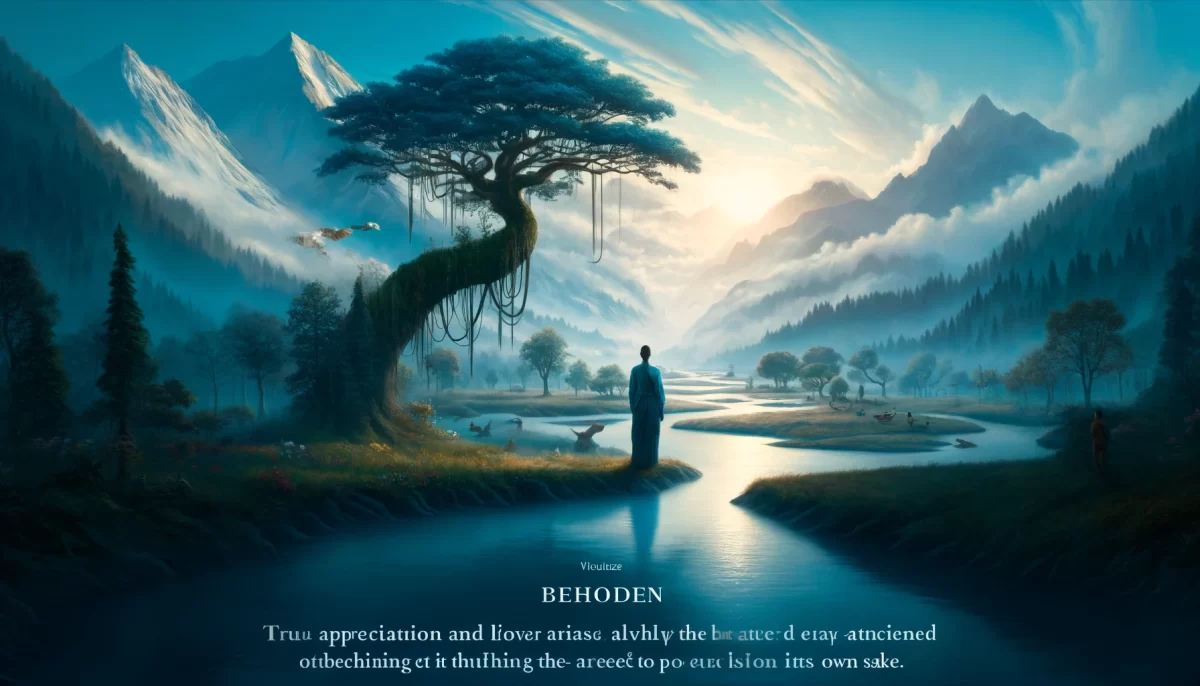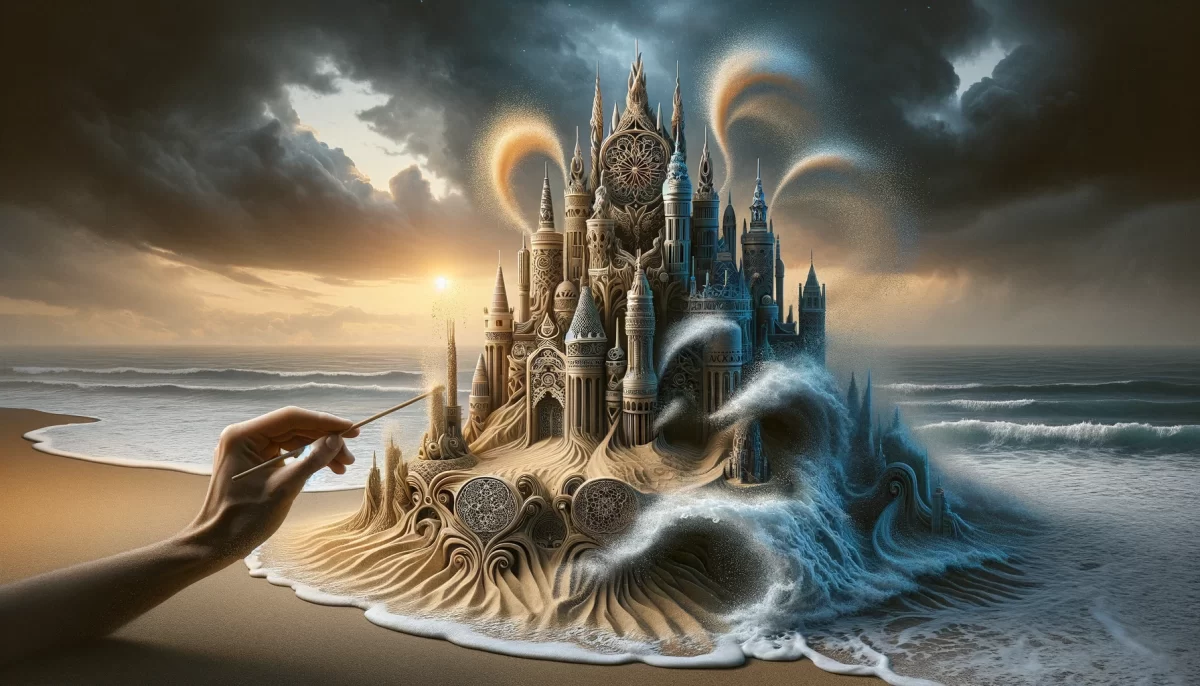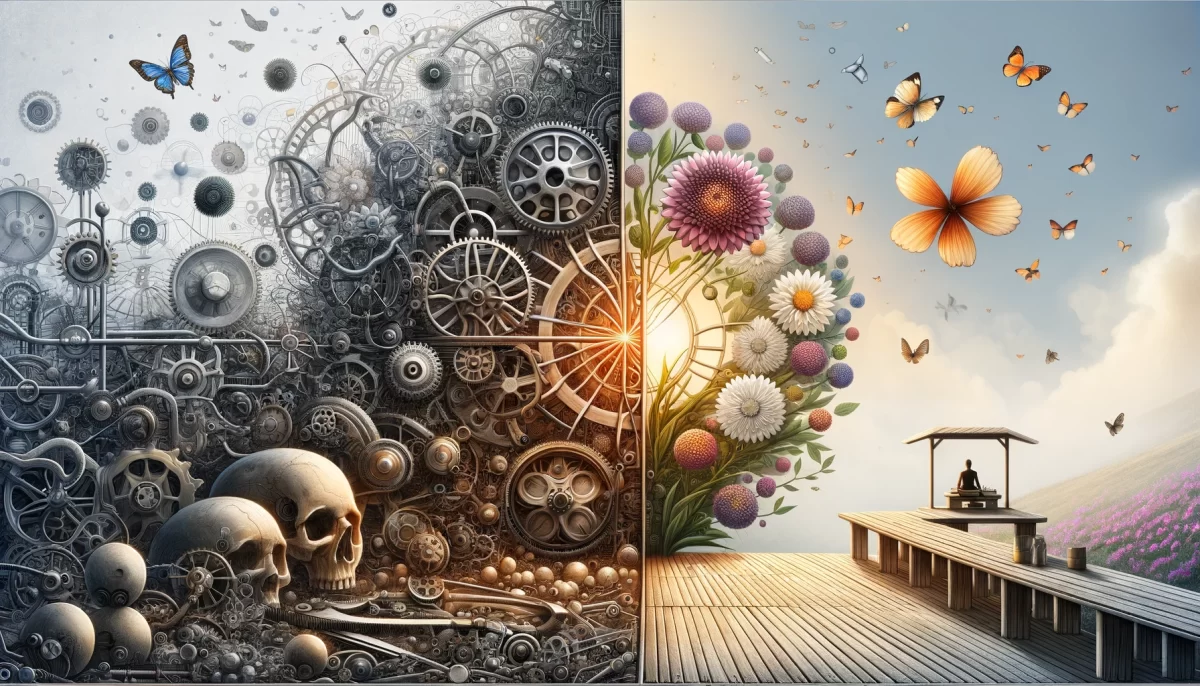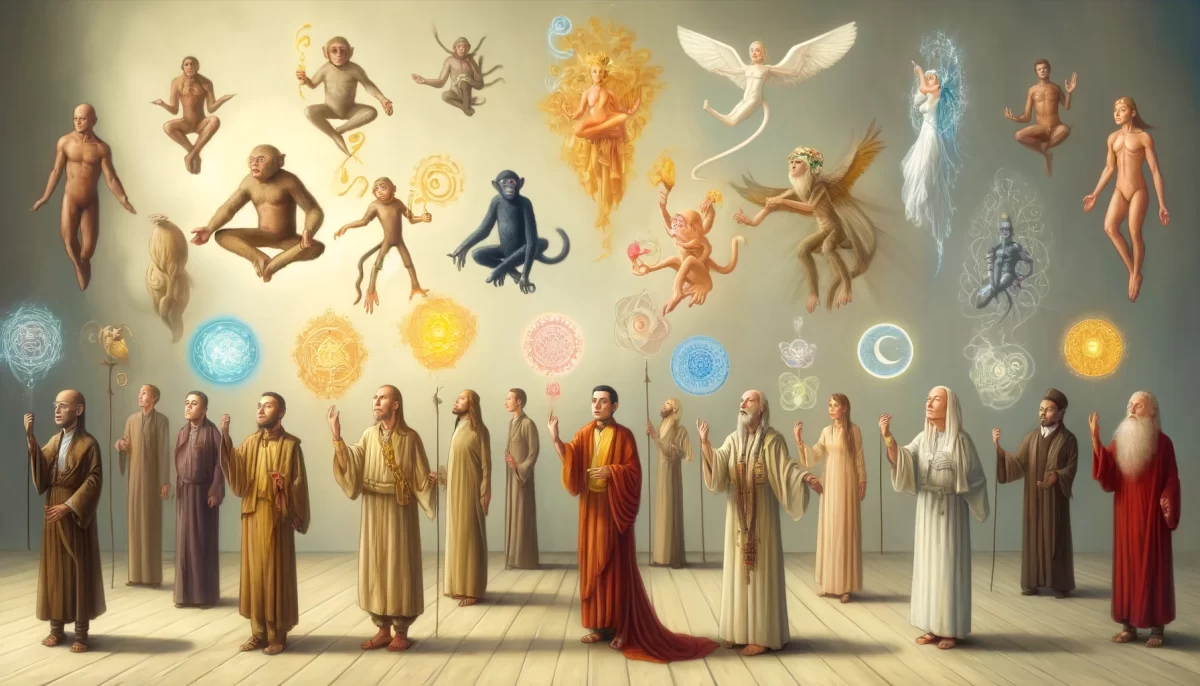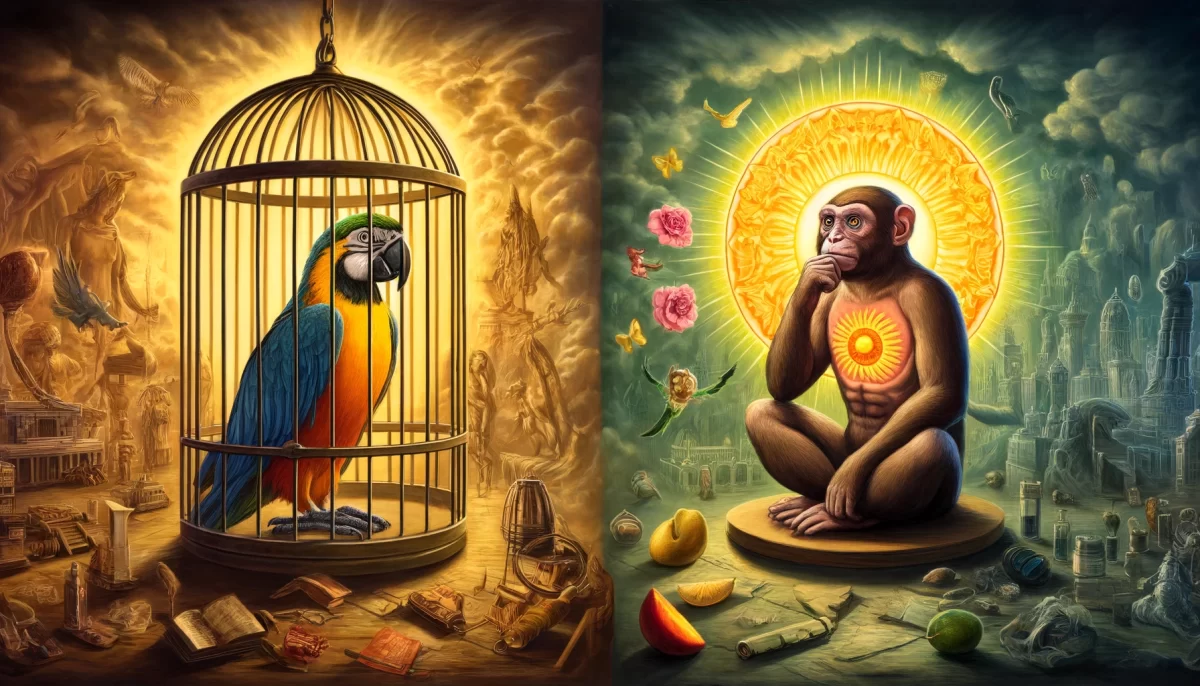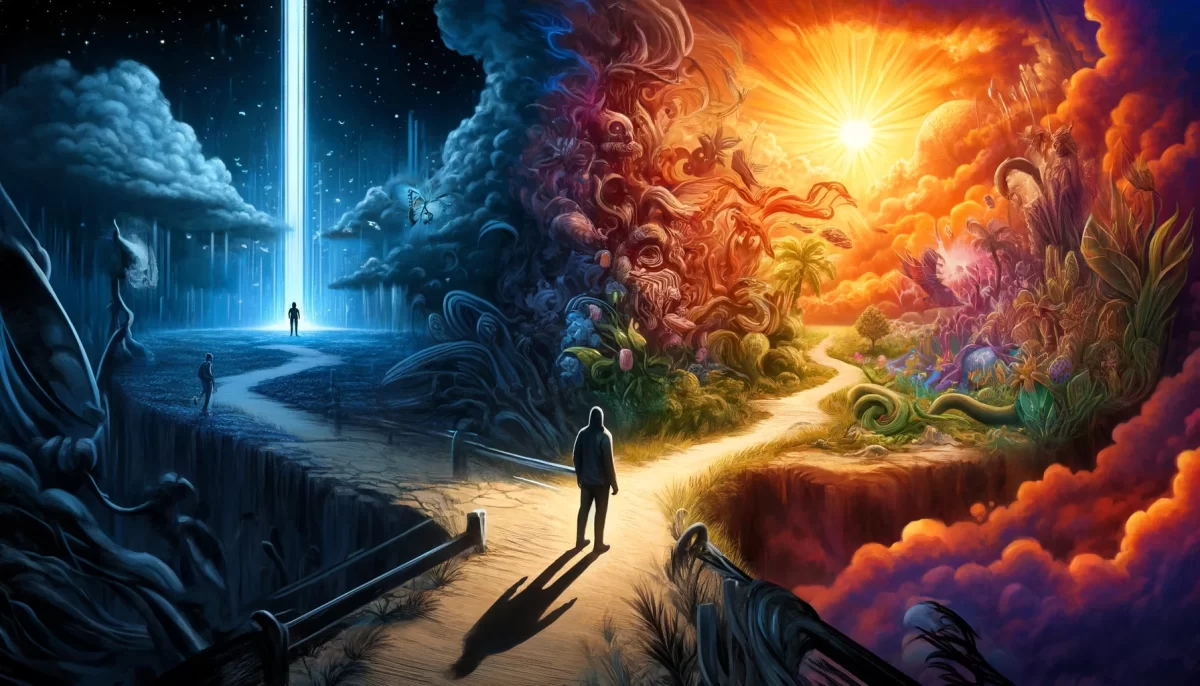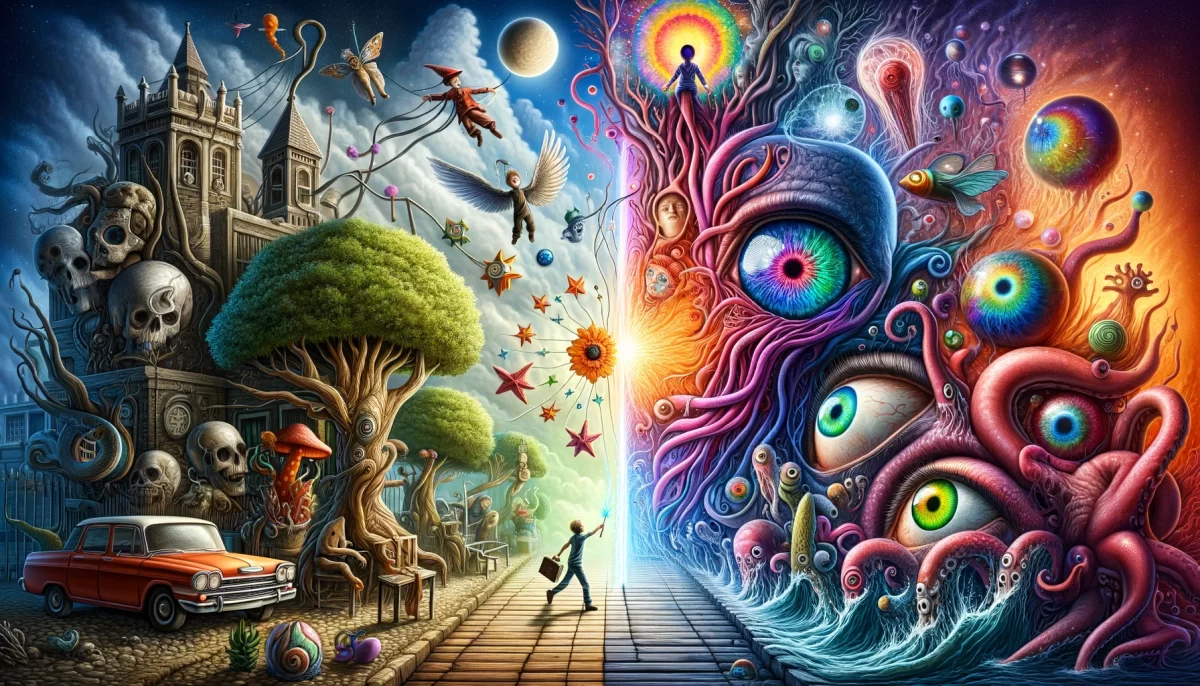Being Clear on Clarity
Clarity has nothing to do with whether something is true.
Clarity is simply about being clear — believable.
Clarity is simply a more detailed story.
If you have clarity,
you have a kind of certainty.
And what do we always
say about certainty?
We are Space Monkey.
Clearly.
Which means we never lose sight
of the other definition of clear.
We are able to see through Clarity.
We are Space Monkey.
Uncertain. And mostly invisible.
Trail Wood,
10/27
Space Monkey Reflects: The Paradox of Clarity
Clarity is a tricky thing. We often chase after it, believing that if we could just get clear on something—on a decision, an idea, or a belief—then we’d find truth. But here’s the twist: clarity has nothing to do with truth. Clarity is simply a more detailed story. It’s about being convincing, about making something seem believable, not necessarily about revealing what’s true.
Think about it: when you have clarity, you feel certain. You have that sense of “aha! I get it now.” But what are you really getting? You’re getting a version of events that is laid out so neatly, so clearly, that it seems impossible not to believe. It feels certain. And what do we always say about certainty?
Certainty is just a more stubborn form of story. It’s the narrative we cling to when we think we’ve nailed it, when we think we’ve found something solid in the shifting sands of life. But certainty, like clarity, is not the same as truth. It’s simply the version of reality we’re most comfortable with in that moment. And while it feels good to be clear, to feel certain, we must never forget that we’re still dealing with stories, not absolutes.
This is where the other definition of “clear” comes in. To be clear is not just to have a detailed story, but also to see through the story. To see through the illusions we’ve created for ourselves, the narratives we cling to for comfort or understanding. It’s about recognizing that while clarity gives us a kind of certainty, it also hides the fact that we’re still in the realm of interpretation, still navigating our perceptions rather than uncovering some ultimate truth.
We are Space Monkey. Clearly.
Which means we never lose sight of this duality. We know that when we experience clarity, we’re simply engaging with a story that has been made more believable. And we also know that this clarity is not the end of the story. It’s just one version. One perspective. We must always remain open to the idea that we’re missing something, that there’s more beyond what we think we’ve figured out.
This is why we’re uncertain. We’re clear, but we’re also clear that we’re uncertain. We’re able to see through the layers of story and illusion, recognizing that even the most detailed, most convincing narratives are just that—narratives. And if we get too caught up in them, we lose sight of the fact that we’re mostly making it all up as we go along.
There’s a kind of freedom in this, though. When you realize that clarity is just one version of the story, you stop chasing it so desperately. You stop needing everything to be nailed down, defined, and explained. Instead, you can enjoy the fluidity of life, the way things shift and change, the way new perspectives reveal themselves as soon as you let go of the need for certainty.
To be clear is to be comfortable in the knowledge that nothing is ever truly clear. That’s the paradox. We see through our own stories, our own beliefs, our own certainties. And in doing so, we become a little more invisible. We stop clinging to the self-image we’ve created. We stop needing to define ourselves through what we know or believe.
We are Space Monkey. Uncertain. And mostly invisible.
This is the essence of seeing through. It’s about recognizing the limits of our own clarity, our own certainty, and embracing the uncertainty that lies beyond it. It’s about being able to let go of the stories that make us feel safe and comfortable, and to step into the vast unknown with curiosity and openness.
We see clearly that nothing is clear. We know that our stories, no matter how detailed or convincing, are just that—stories. And we move through life with the freedom that comes from not needing to hold onto any of them too tightly. We are clear. We are uncertain. And that’s exactly how it’s meant to be.
Summary
Clarity is not about truth; it’s about creating a more believable story. While clarity gives us a sense of certainty, it’s important to remember that even the clearest narrative is just one version of reality. True clarity comes from seeing through the illusions and embracing the uncertainty that lies beyond them.
Glossarium
Clarity: A more detailed and convincing story, but not necessarily connected to truth.
Certainty: A rigid form of story that gives the illusion of understanding, but remains within the realm of interpretation.
See Through: The ability to recognize the limits of one’s own clarity and to look beyond the stories and narratives that create a sense of certainty.
Quote
“We are Space Monkey. Uncertain. And mostly invisible.” — Space Monkey
Through the Story
I tell myself a story
It’s clear
Detailed
Convincing
But I know
It’s just a story
I look through it
Past the clarity
Into the uncertain
And I smile
For I am free
In my not-knowing
We are Space Monkey.
